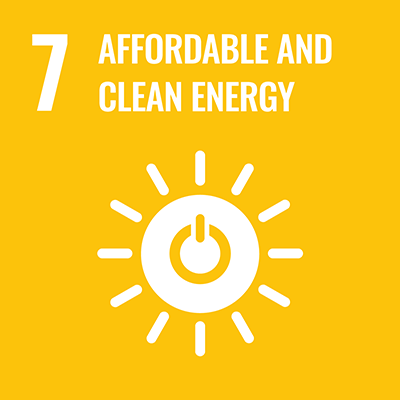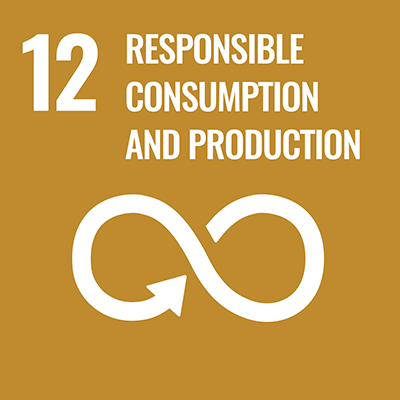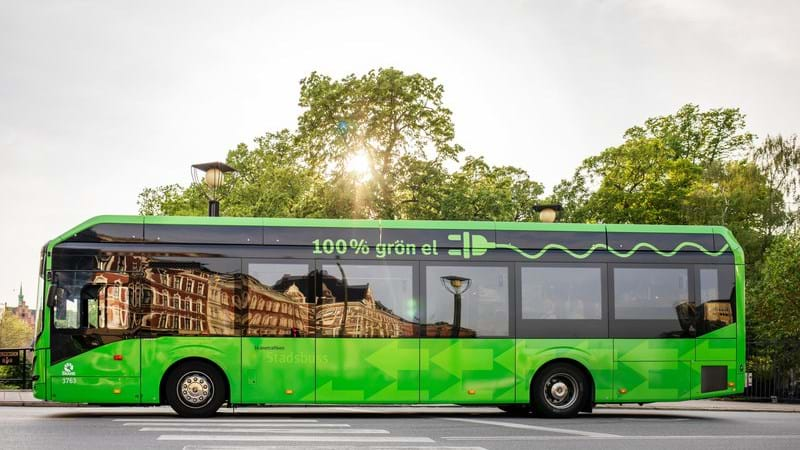Planet
Nobina provides public transport that enables millions of people throughout the Nordic region to travel together, sustainably. In a world where transportation accounts for a large share of climate emissions, the transition to more public transport is an obvious and effective way to achieve Sweden’s and the EU’s climate targets. Our size means Nobina can make a real difference and help to advance the transition. We want to achieve this by taking responsibility, developing even better solutions and making public transport more efficient and attractive. This work begins with our own ambitious targets that have been validated by the Science
Based Targets initiative. Because even if we help people to travel together every day, we must continue to reduce our emissions so our positive impact on the environment and climate is as large as possible.

Affordable and clean energy

Responsible consumption and production
Global goals 12 and 7
Nobina’s contribution to the goals
Nobina’s greatest contribution is to target 12.2,
which concerns achieving the sustainable management and efficient use of natural resources by 2030. As part of this effort, we are working to convert the vehicle fleet to 100-percent renewable fuels and training our drivers
in energy-efficient driving.
Nobina contributes to goal 7
by continuously seeking solutions that reduce our own energy consumption.
This is particularly important as we are in parallel transitioning to electric vehicles to reduce the use of fossil fuels.
Successful on-demand solutions
At many locations in our Nordic countries, with small towns and long distances, traditional public transport with fixed bus routes is not a realistic option, neither for transport service providers and regions nor for travellers. Quite simply, a new, smart approach is needed to travelling together. Such as Nobina’s on-demand concept.
One of the major challenges for public transport is to provide attractive solutions in small towns and rural areas at a reasonable cost and with reasonable ticket prices. In many regions, the distances are long and the journeys few, which means buses are almost empty for many of the kilometres driven. Here, Nobina has successfully launched on-demand services, which provide more and better public transport using fewer resources and at lower cost.
Smart, on-demand services
On-demand services allow travellers to order their own journey – whenever, however, wherever. Instead of a fixed bus route with a number of bus stops, on-demand services have far more virtual bus stops where travellers can board. Travellers order their journey in an app and immediately receive information about the approximate waiting time, which is rarely more than 10–15 minutes.
In Säffle, public transport use has risen 1,200 percent since the service was introduced in 2021. Subsequently, Nobina has also launched on-demand solutions in Sunne, Sundsvall and Kinna. The solutions are slightly different between the various locations but are based on the same smart benefits – bus services that offer much better accessibility and flexibility for travellers and also significantly reduce the climate and environmental impact.
Only sustainability benefits
What in theory may sound impossible both practically and economically – sending buses on demand, similar to a taxi – has proven to be a very successful solution with only sustainability benefits:
- Passengers can travel when they want to, where they want to, and in most cases to “their” bus stop, since there are many more virtual bus stops.
- Instead of large buses, we can drive smaller buses and minibuses, adapted to the number of travellers. This reduces emissions, resource use and noise.
- The buses always take the most direct route and never drive at times or to bus stops without travellers, but only when and where someone wants to travel.
- More people in smaller towns and rural areas can and want to travel by public transport and with this solution they have the opportunity to leave their car at home – or perhaps refrain entirely from investing in a car or second car.
- Vehicles are freed up and can be used where they are needed most.
- On-demand services can be used as an alternative to scheduled bus services that may be difficult to run efficiently and attractively in rural areas, or as a complement to traditional fixed bus routes in cities.
Full speed towards the goal of 100-percent electric buses in Denmark by 2030
In Denmark, Nobina has accelerated to full speed and gone from zero to 100 electric buses in three years. Close dialogue is also under way with the clients about opportunities to increase the service life of electric buses, as another step in the green transition.
In contrast to the rest of the Nordic region, diesel buses were predominant in Denmark until 2019. Since then, the pace of progress has accelerated following clear political decisions to shift to electric power, with Denmark skipping over the biofuel phase and moving straight to electrification.
Nobina Denmark is one operator that is at the forefront, going from zero to 100 electric buses in three years, which is one third of the company’s bus fleet in Denmark. The transition is continuing at the same pace as we move forward with another 100 electric buses over the next three years, with the aim that all buses will be electric by 2030 in line with new tender requirements.
Nobina was also a pioneer in Denmark when it trialled hydrogen fuel. In 2018, the choice moving forward remained undecided between electric, hydrogen or perhaps some other alternative. As part of a tender at that time, Nobina offered to operate the first hydrogen bus in regular service near Copenhagen, which it did for two years.
Even if the transition is necessary and obvious, it requires significantly higher investments, which impacts both Nobina Denmark and clients. Nobina Denmark is therefore reviewing different models for how electric buses can be refurbished and upgraded to be operated for much longer, and in parallel the company is in close dialogue with clients about what is required in contracts and requirements to make the life cycle of electric buses more comparable with trains or trams in the future.

